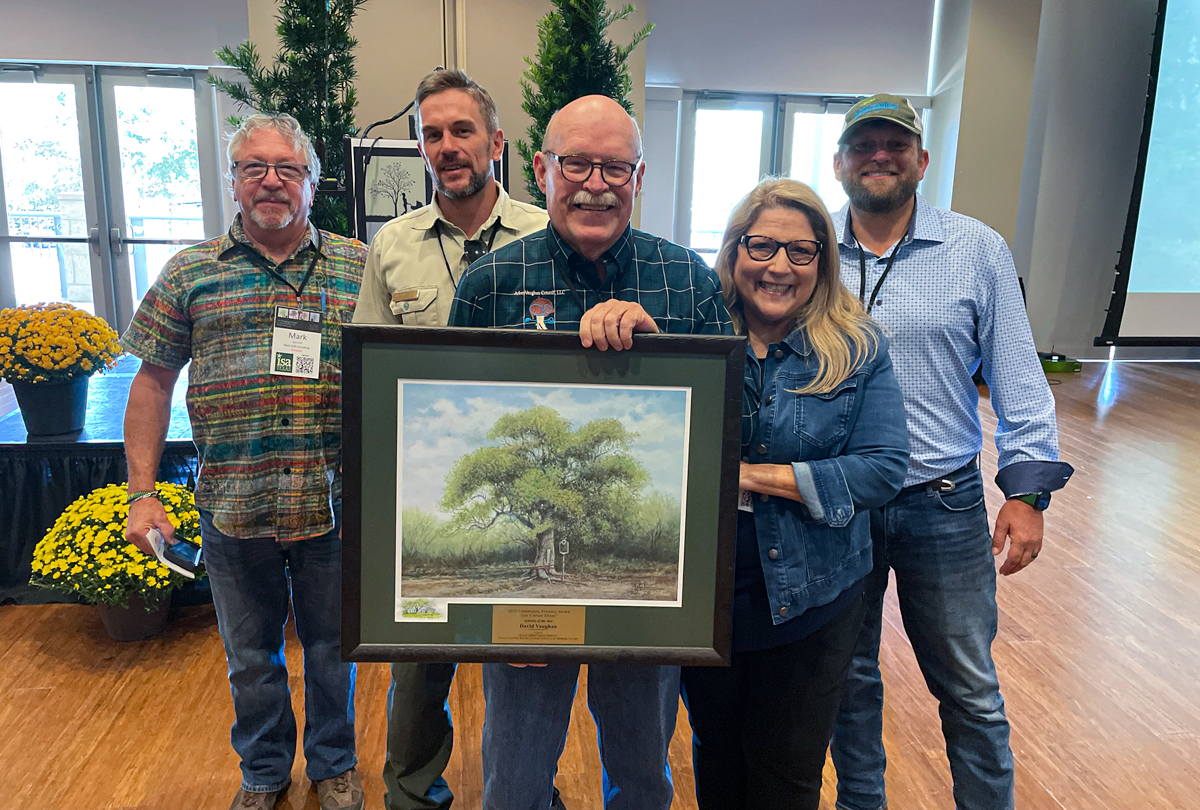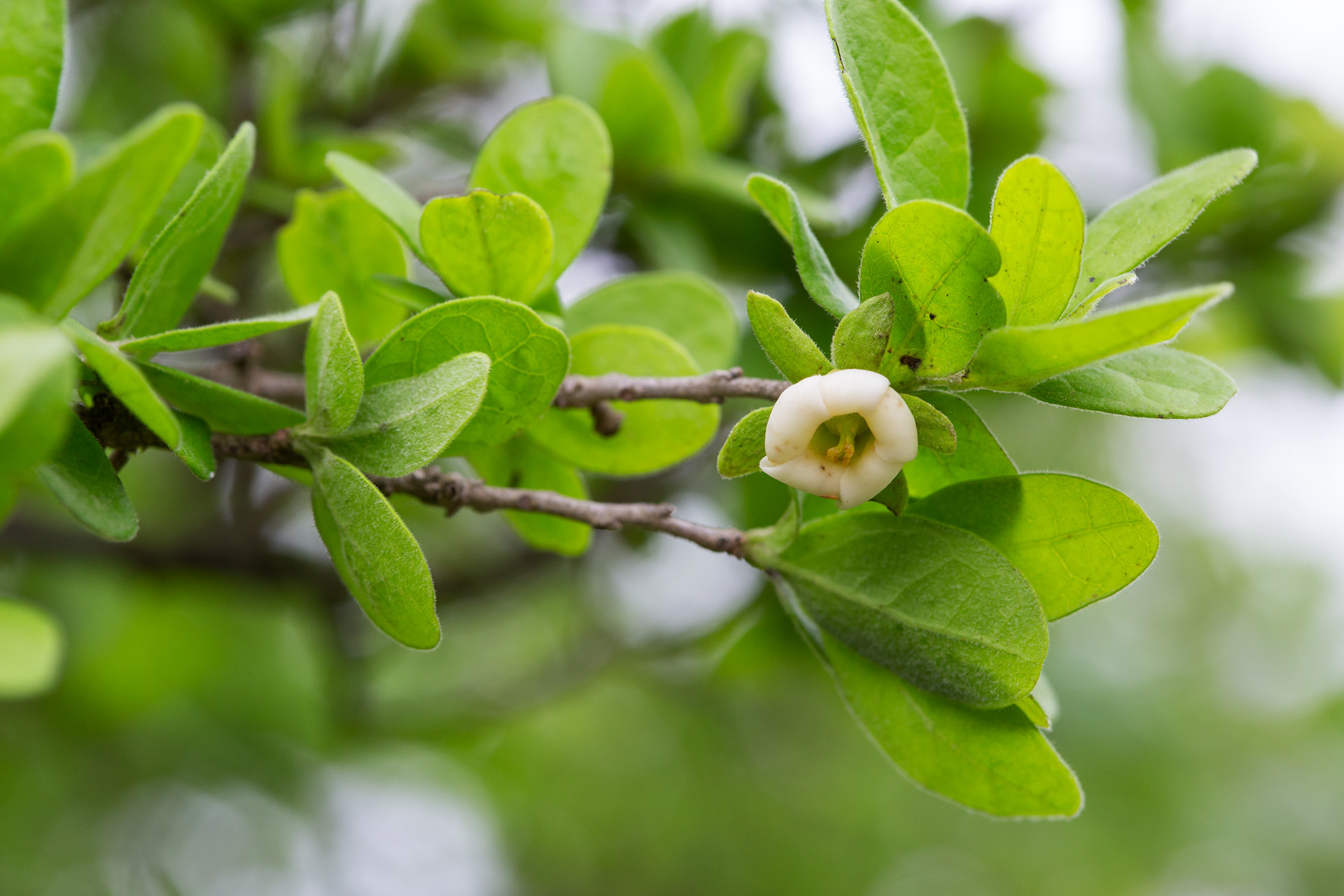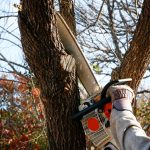Meet a local arborist and educator whose lifelong work with trees helped make the San Antonio botanical industry what it is today.
Note: “Plants and People” is an occasional series featuring San Antonio residents with a diverse botanical background and perspectives on how plants impact cultures and landscape practices.

David Vaughan (center) received the 2022 Texas Arborist of the Year award.
Photo courtesy of David Vaughan.
Who are you, what do you do, and how did you get here?
“It seems I’ve always been interested in trees,” remarks David Vaughan, who sees himself now as a semi-retired arborist. Although a simple statement, it’s one many can relate to. Growing up in different forests around the country as a consequence of his parents’ military duties, Vaughan spent much of his childhood outdoors with his constant leafy companions thanks to his Boy Scout troop. By the time he was in high school, he knew he wanted to be an arborist.
Over the years that followed, Vaughan served in the military, went back to school, settled down in San Antonio, and racked up experience in arboriculture with different companies and professionals across the city. Eventually, Vaughan found himself in a position with more time to allow for a change of pace. He started coaching his daughter’s school basketball team, served as an education advisor on the board of International Society of Arboriculture for three terms, and helped build their Master Series and Certified Arborist Prep courses. He leaned into education and shaping the next generation.
What project(s) are you working on right now?
In his semi-retirement, Vaughan finds himself a little busier than he’d like. He takes on teaching opportunities to share his knowledge, and last year won the 2022 Texas Arborist of the Year award. Though he no longer works officially, Vaughan continues to build a stronger arborist community in San Antonio by investing his time in young professionals. “Train them right, and then [they] leave,” Vaughan says, though not from a place of frustration. He sees those new arborists striking their own paths as a good thing, as a force that raises the whole community to higher standards.
Which plant(s) are you connecting with most right now?
Pointing to a strikingly beautiful cluster of trees in the corner of his yard, Vaughan smiled as he eyed the four Texas black persimmon trees (Diospyros texana) that grace his property. He remarked that this native persimmon is a perfect species for San Antonio’s urban gardens since it’s slow-growing and only reaches a height of about 20 feet. The bark is distinctly silver and peels away from the trunk similar to a madrone or crape myrtle. The black persimmon is also edible, though only female trees produce the super sweet fruits that taste like dates. This quality also makes the Texas persimmon a superb wildlife tree.

Who inspires you to do what you do?
Vaughan credits one of his first bosses, Allan Brook, for what he knows about trees. Although Vaughan was padded with a Bachelor of Science in Forestry and Master of Science in Arboriculture at the time he started working with Brook, he quickly realized he still had much to learn. Vaughan argues that what he learned on the job under Brook’s watch blew past everything he had learned in school — and often blew his mind as well. He notes the case of an ash tree that suffered extensive damage from a car crash. Brook prescribed a simple wrap for the ash to encourage it to develop a callous, much like a band aid over a scrape helps form a healthy scab. After a year, the ash healed over and experienced “no death upstairs, [and] no death downstairs,” Vaughan remarks, an outcome he could not have dreamed of previously.
What advice do you have for new gardeners/plant enthusiasts?
“Get local advice; become well educated,” Vaughan says. He admits it’s easy to get lost in all the information that’s out there, but not all of it is reliable. He recommends educational programs by the Dirt Doctor based in Dallas, Bob Webster in San Antonio, and John Dromgoole in Austin. Local organizations like the Native Plant Society of Texas and San Antonio Botanical Garden are also good sources for San Antonio-specific education, says Vaughan.




